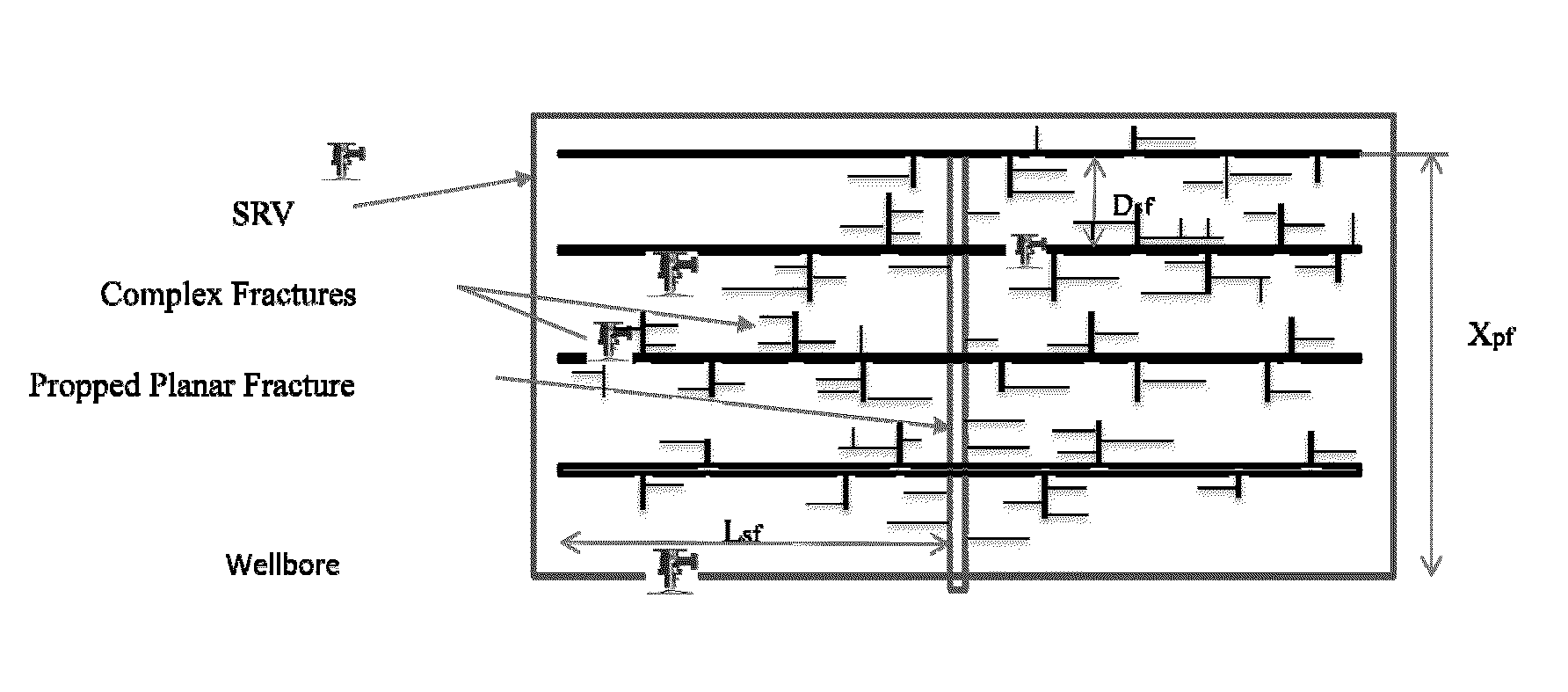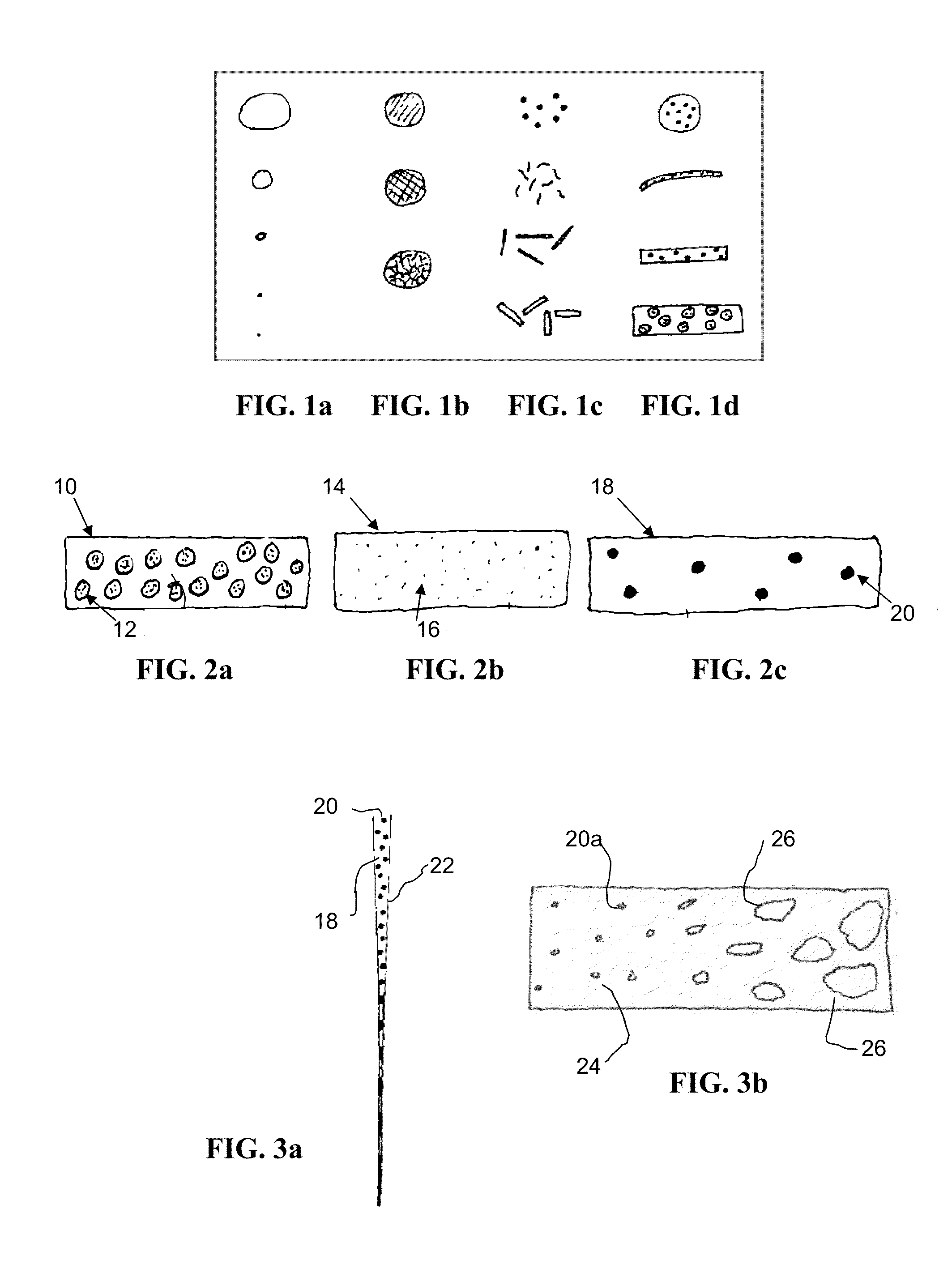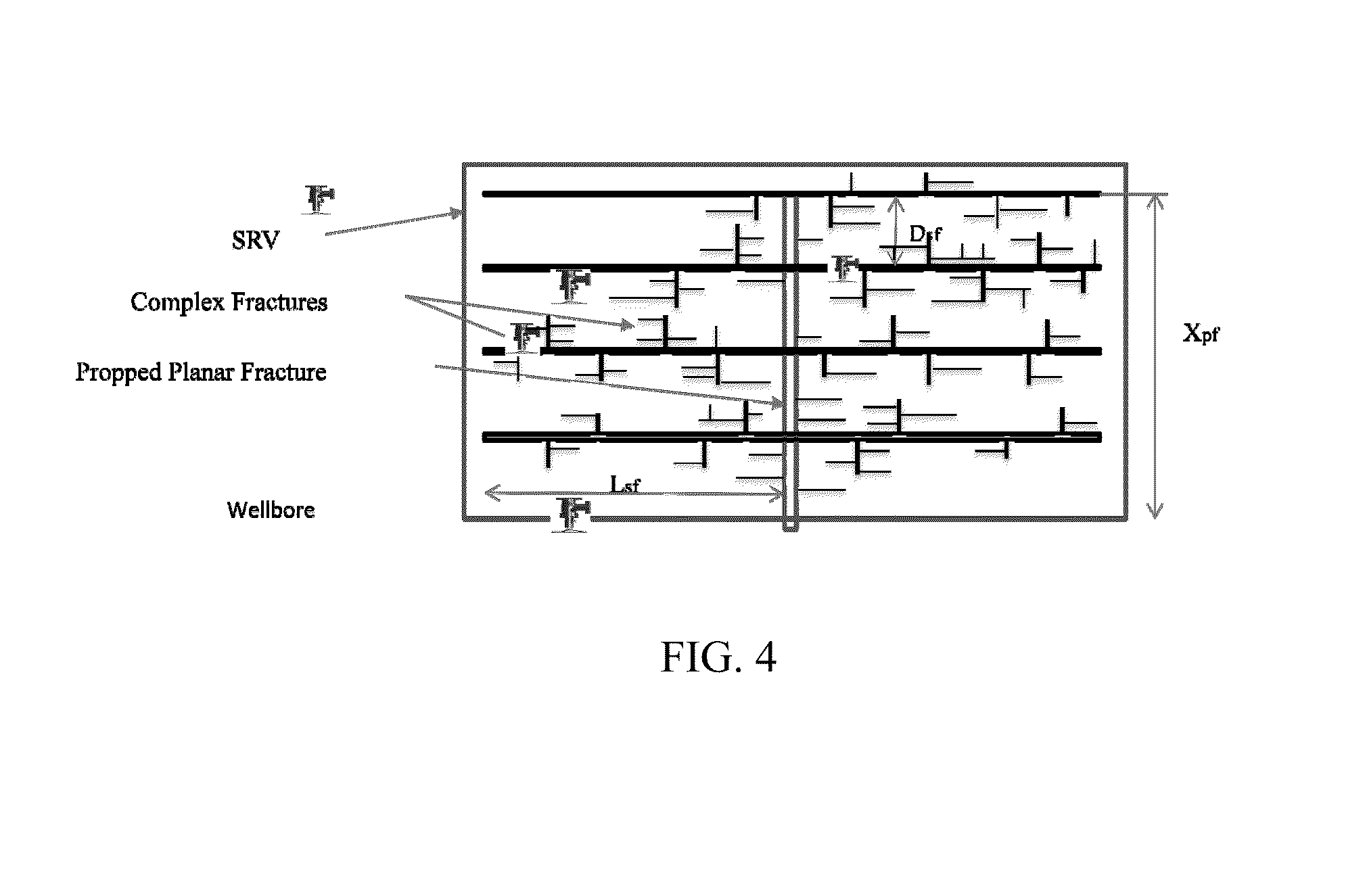Method of increasing fracture network complexity and conductivity
- Summary
- Abstract
- Description
- Claims
- Application Information
AI Technical Summary
Benefits of technology
Problems solved by technology
Method used
Image
Examples
embodiment 500
[0056]The size of the viscous material will typically vary depending on the width characteristic of the hydraulic fractures created within lower permeability reservoirs. For instance, the viscous material may have an average particle size from about 500 nm to about 50 cm, in one non-limiting embodiment 500 nm to about 30 mm, alternatively from about 1 μm to about 4 mm, and in another non-limiting embodiment about 10 μm to about 1 mm.
[0057]During pumping, the viscous material effectively retains its size and shape within the second fluid and appears as discrete tiny masses with near zero shear rate viscosity in the low viscosity fluid. The tiny high viscosity material in the second fluid, in one non-limiting embodiment, is thus highly elastic and deformable and resists fluid-shear-induced fragmentation during pumping. Depending on the size of the viscous material, the second fluid may behave like the first fluid as it flows into and through the initial portion of the primary fracture...
embodiment 1000
[0079]While the viscosity of the second fluid and first fluid may be substantially the same, the viscous material is at least 1,000 times more viscous than the first fluid, and typically is more than 100,000 times more viscous than the first fluid at 0.01 sec−1 shear rate at 80° F. (27° C.). The ratio in viscosity (measured at 0.01 sec−1 and 80° F. ((27° C.)), Vr, of the viscous material to the first fluid may be designed to achieve the fracturing and production purposes of the methods described herein. In one non-limiting embodiment, for example, Vr is 100 or greater, in one non-limiting embodiment 1000 or greater, alternatively is 10,000 or greater, and in a different non-limiting embodiment is 100,000 or greater.
[0080]The integrity of the viscous material to retain its size and shape during shear when being pumped downhole may be dependent on the viscosity, size, shape, density and other properties of the viscous material. While the viscous material may be of larger sizes fluid d...
PUM
 Login to View More
Login to View More Abstract
Description
Claims
Application Information
 Login to View More
Login to View More - Generate Ideas
- Intellectual Property
- Life Sciences
- Materials
- Tech Scout
- Unparalleled Data Quality
- Higher Quality Content
- 60% Fewer Hallucinations
Browse by: Latest US Patents, China's latest patents, Technical Efficacy Thesaurus, Application Domain, Technology Topic, Popular Technical Reports.
© 2025 PatSnap. All rights reserved.Legal|Privacy policy|Modern Slavery Act Transparency Statement|Sitemap|About US| Contact US: help@patsnap.com



